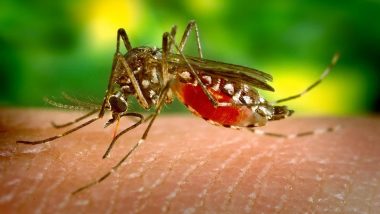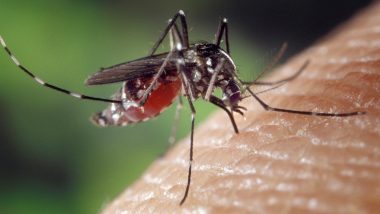It seems like we won’t be able to take a sigh of relief this year! Not very soon. 2020 is offering us way lot than we ever anticipated. Non-stop onslaught of shocking news, lots of worrisome or scary headlines, all of them has taken over social media amid the pandemic. Now, as we continue our battle to contain the spread of the deadly coronavirus, another virus is threatening lives in the United States of America, as per latest reports. The Eastern Equine Encephalitis (EEE) virus is brewing, this one in the Northeast of the United States of America and some Gulf states too. It’s a mosquito-borne disease, and medics fear that it might create some tension during this summer. Should you be worried about EEE? In this article, we bring you everything that so far is revealed about the virus, its causes, symptoms and precautions and how infectious it is. Hantavirus: News of Person Dying Due to Another Virus in China Leaves Netizens Scared; Here’s All You Need to Know About Hantavirus Pulmonary Syndrome.
OneZero’s report, “A Deadly Mosquito-Borne Illness is Brewing in the Northeast,” went viral on social media, as readers already nervous of going outside amid the coronavirus pandemic realised they will now have to reckon with mosquitoes.
Here's the Tweet:
NOT NOW DEADLY MOSQUITO-BORNE ILLNESS BREWING IN THE NORTHEAST https://t.co/V4mFI8rMK5
— Harriet Marsden (@harriet1marsden) June 10, 2020
What is EEE Virus?
The Eastern Equine Encephalitis (EEE) virus is a rare disease which is spread by the infected mosquitoes. It can cause inflammation of the brain. According to the Centres for Disease Control and Prevention (CDC), one-third of the people who come in contact with the virus die. The virus cannot be transmitted from human to human, but can be spread to a human through a mosquito bite.
How is the EEE Virus Transmitted?
As per the CDC, EEE is spread when an infected mosquito bites a person, but the transmission is rare. Cases of EEE, are rare, but have begun to become more common in the US. Unlike the coronavirus, the disease is not spread directly from person to person. But researchers believe that those who are once infected by the EEE virus can suffer lifelong brain damage or even death, if the infection impacts their brain or spinal cord. 'Murder Hornets' in US For The First Time; Know About The Largest Wasps That Kill Almost 50 Humans Per Year!
What Are the Symptoms of EEE Virus?
The symptoms of EEE virus are flu-like, including fever and joint or muscle pain. Sudden fever, chills, malaise, arthralgia and myalgia. The illness lasts for one to two weeks, and most people recover completely when there is no central nervous system involvement. Signs and symptoms of neurologic disease include fever, headache, vomiting, diarrhoea, seizures, behavioural changes, drowsiness, and coma.
Should You be Worried? Who Are Most At Risk?
In 2019, there 38 confirmed cases of EEE in the US. This includes, 15 deaths in 10 states: Alabama, Connecticut, Georgia, Indiana, Massachusetts, Michigan, New Jersey, North Carolina, Rhode Island and Tennessee. CDC states that people over 50 and under 15 are at greater risk for developing the most severe cases of EEE. There is no approved human vaccine for EEE or any specific antiviral treatment, as of now. Severe illness is treated by hospitalisation, respiratory support, IV fluids and medications to prevent other infections.
As of now, researchers are not sure yet if the Northeast in the US will see another active season. But the public will reportedly be alerted around mid-June, if there is any indication that special precautions should be taken to combat the spread of EEE. Since mosquitoes carry plenty of other viruses, it is always a good idea to have insect repellent on-hand if you are visiting any grassy or wooded area.
(The above story first appeared on LatestLY on Jun 12, 2020 01:45 PM IST. For more news and updates on politics, world, sports, entertainment and lifestyle, log on to our website latestly.com).













 Quickly
Quickly




















